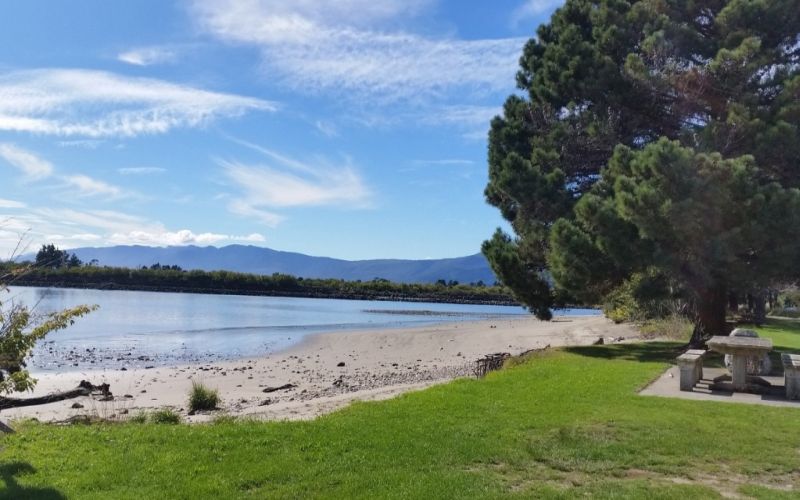Marrs and Shingle Beach Working Group
What's new?
- The working group has completed the sampling programme that was set up in 2018. A number of new water quality monitoring sites had been established around the catchment to gain more information on potential sources of contamination.
- Faecal source tracking (FST) analysis was carried out on a number of samples from Bradshaws Creek and Marrs Beach. This type of testing provides information on the source of E. coli contamination. All results indicated that ruminant was most likely to be the dominant source. Cows, deer, and sheep are all types of ruminant animals.
- Two days were spent evaluating flow patterns around Bradshaws Lagoon using dye tracing and visual inspection. Connectivity was observed between water from the Bradshaws catchment and Marrs Beach.
- A combination of higher flows and higher E. coli concentrations indicated that Bradshaws Creek (above Martins Rd Bridge), was the main tributary supplying faecal contamination to Bradshaws Lagoon.
- Based on the sampling undertaken by the Group to date, we are confident that ruminant faecal contamination from Bradshaws Creek is the most significant driver of elevated E. coli and pathogen risk at Marrs Beach. Shingle Beach requires further investigation before appropriate management options can be established for that area.
- The group has provided an initial update report to the Council Resource Management Group Committee in July 2019.
- AgResearch has been commissioned to provide recommendations on how faecal contamination can be reduced.
- Further monitoring is planned for summer.
How can I contribute?
We would love to hear your feedback, or if you want to know more about the community group, have any questions or comments, please email info@wcrc.govt.nz or Neal Clementson at neal@heaphymining.co.nz.




